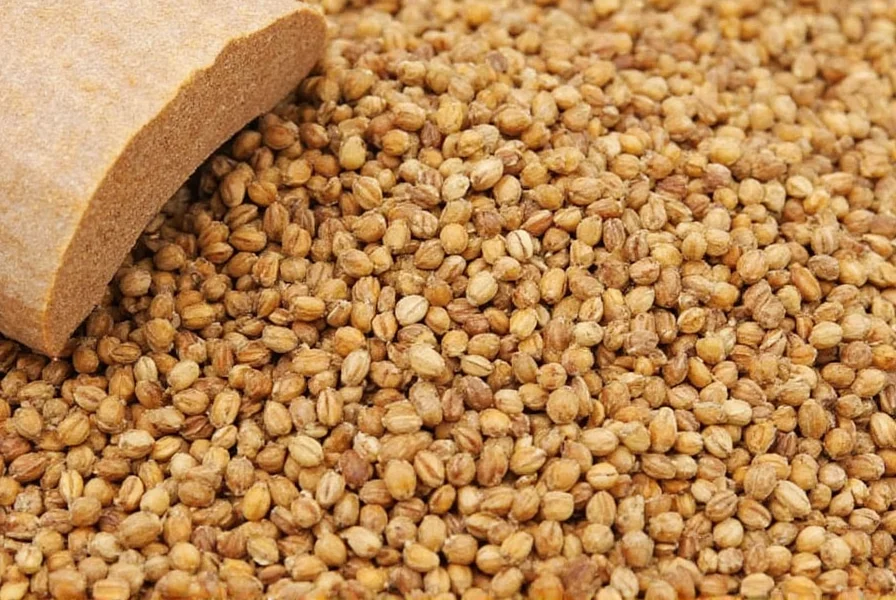Cumin meaning extends beyond its botanical definition to encompass cultural, historical, and linguistic significance. This ancient spice has been valued for thousands of years across multiple civilizations, making its etymology particularly rich and revealing about human culinary history.
Etymology of Cumin: Tracing Linguistic Roots
The word “cumin” traces its origins through multiple languages, reflecting the spice's widespread historical trade. It derives from the Old English “cymin,” which came from the Latin “cuminum,” itself borrowed from the Greek “kyminon.” The Greek term likely originated from the Arabic “kammūn,” which ultimately traces back to the Hebrew “kammon.” This linguistic journey mirrors cumin's physical journey along ancient trade routes from its origins in the Eastern Mediterranean region.

Botanical Identity and Characteristics
Cuminum cyminum, the scientific name for cumin, is an annual herb that grows to 30–50 cm (12–20 inches) tall. The plant produces small white or pink flowers arranged in umbels, characteristic of the Apiaceae family that includes parsley, coriander, and caraway. What we commonly refer to as “cumin” are actually the dried fruit (schizocarps) of the plant, each splitting into two crescent-shaped seeds when mature.
These seeds contain 3–5% essential oil, primarily composed of cuminaldehyde, which gives cumin its distinctive aroma and flavor profile. The seeds measure approximately 4–6 mm (1⁄6–1⁄4 inch) long and have nine ridges with oil canals that release their aromatic compounds when crushed or toasted.
Historical Significance Across Civilizations
Cumin meaning gains depth when examining its historical context. Archaeological evidence shows cumin was used in ancient Egypt as early as 2000 BCE, where it served both culinary and embalming purposes. Egyptian mummies have been found with cumin seeds, indicating its importance in their culture.
In ancient Rome, cumin was so valuable that soldiers carried it with them as a seasoning and digestive aid. Roman author Pliny the Elder documented cumin's use as both a spice and medicinal herb in his Natural History. During the Middle Ages, cumin became a symbol of fidelity, with Dutch soldiers carrying cumin bread for good luck and protection.
| Civilization | Historical Use of Cumin | Time Period |
|---|---|---|
| Egyptian | Embalming agent, culinary spice | 2000 BCE |
| Roman | Soldier's ration, digestive aid | 1st century CE |
| Medieval European | Symbol of fidelity, luck charm | 5th-15th century CE |
| Indian | Ayurvedic medicine, curry component | 1000 BCE-present |
Culinary Applications Worldwide
Understanding cumin meaning requires examining its role in global cuisines. In Indian cooking, cumin (known as “jeera”) forms the foundation of many spice blends and is often tempered in hot oil to release its essential oils. Mexican cuisine relies heavily on cumin in dishes like chili con carne and taco seasoning, while North African tagines frequently feature this spice.
The distinctive flavor profile of cumin—earthy, warm, slightly bitter, and peppery—makes it versatile across sweet and savory applications. When toasted properly, cumin develops nutty, almost smoky notes that enhance its culinary value. Professional chefs often toast whole cumin seeds before grinding them to maximize flavor, a technique that reveals the true depth of cumin meaning in cooking.

Cultural Symbolism and Traditional Beliefs
Beyond its culinary applications, cumin meaning includes cultural symbolism. In ancient times, cumin was believed to have protective properties against evil spirits. Some cultures associated it with love and fidelity, with brides carrying cumin seeds in their bouquets. In traditional medicine systems across Asia and the Middle East, cumin has been used for digestive issues, respiratory conditions, and as a general tonic.
The spice's historical association with survival is evident in its inclusion in Roman soldiers' rations and its presence in Egyptian tombs—both contexts where sustenance and preservation were paramount. This dual role as both nourishment and protection contributes significantly to the comprehensive understanding of cumin meaning.
Cumin as a Name: Modern Usage
While primarily known as a spice, cumin meaning has expanded in contemporary contexts. Some parents have begun using “Cumin” as an unconventional given name, drawn to its earthy, natural connotations and distinctive sound. This usage remains rare but reflects growing trends toward nature-inspired names.
Linguistically, using cumin as a name creates interesting connections between personal identity and natural elements. Those researching “cumin meaning as a name” typically seek to understand these symbolic associations rather than botanical definitions, demonstrating how context shapes the interpretation of cumin meaning.
Scientific Research on Cumin Properties
Modern research has validated many traditional uses of cumin. Studies indicate that cumin seeds contain antioxidants, including flavonoids and phenolic compounds, which may contribute to health benefits. Research published in Food Chemistry has documented cumin's potential anti-inflammatory and digestive properties.
The essential oil composition of cumin, particularly cuminaldehyde, has been studied for its antimicrobial effects. While not a substitute for medical treatment, these findings support historical uses of cumin in traditional medicine systems, adding scientific dimension to cumin meaning beyond culinary applications.











 浙公网安备
33010002000092号
浙公网安备
33010002000092号 浙B2-20120091-4
浙B2-20120091-4